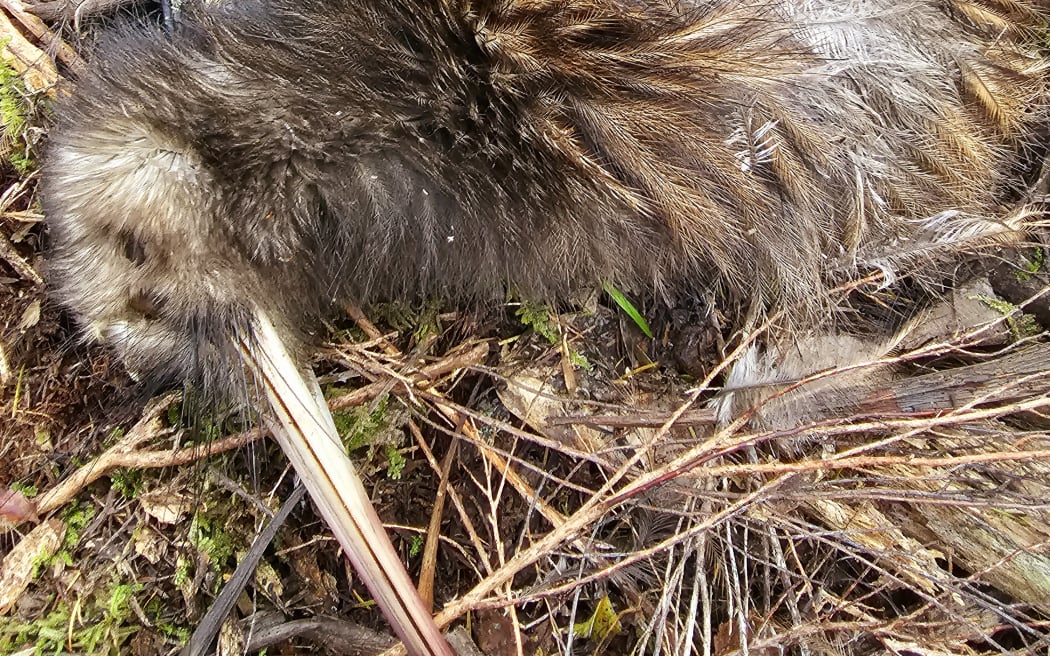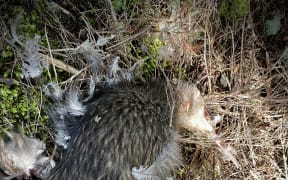
All six kiwi found dead in Ōpua Forest in the past fortnight have injuries consistent with being gripped in a dog's jaws. Photo: Supplied/ Bay Bush Action
Dog owners letting their pets out for exercise instead of walking them on winter evenings could be a factor behind the recent spate of kiwi deaths in Northland, a conservation group says.
Figures from the Department of Conservation showed 20 kiwi have been killed in the Bay of Islands since May with 10 of those deaths caused by suspected dog attacks.
Six have been killed in Ōpua Forest, near Paihia, in the past fortnight alone.
The figures showed eight kiwi were killed by cars in the same period while the remaining two died of unknown causes.
DOC acting manager for Pēwhairangi/Bay of Islands Lara McDonald said kiwi were thriving in Northland in areas with good predator control and good dog control.
The region was bucking the national trend of declining kiwi numbers because overall, its kiwi population was increasing by 3 percent a year.
"So it's a conservation success story for the most part, but the recent spate of kiwi killed by dogs suggests that we've slipped," McDonald said.
The dead kiwi were all wild-hatched, not released, and most were more than a year old and weighed over 1 kilogram.
That showed community-led predator control groups were successfully getting kiwi through their crucial first year. By that age they were big enough to fight off a stoat.
Stoats killed 95 percent of kiwi chicks in areas without predator control, she said.
Three of the kiwi killed in Ōpua Forest had been sent to Massey University so experts could confirm the cause of death.
However, their injuries were consistent with being held in a dog's jaws.
Kiwi Coast conservation group coordinator Ngaire Sullivan said in general, kiwi conservation in Northland had been a great success.
"We've just been let down in this case," she said.
One possible explanation for the recent spike in kiwi deaths was that dog owners were arriving home from work when it was cold, dark and rainy - so they were opting to let the dog out to get some exercise on its own rather than taking it for a walk.
An increase in the number of vehicle strikes could have a similar seasonal cause.
In mid-winter many people were driving to or from work in the dark, when kiwi were active and more likely to be on the road.
"It's a beautiful problem to have, and it's because we have kiwi literally living in our backyards."
Dog attacks on kiwi were entirely preventable, Sullivan said.
Whangārei Heads, which had large numbers of kiwi and dogs, proved the birds and pets could coexist.
In the past 20 years, the number of kiwi at the Heads had soared from about 80 to more than 1100, she said.
Kiwi Coast had set up a 'Know Your Dog' course for owners who wanted to learn more about how to keep wildlife safe from their pets.
The course aimed to fill a gap for owners of pet and lifestyle dogs because the long-standing kiwi aversion training courses were only effective for working and hunting dogs.
One of the worst spates of kiwi deaths in recent times occurred at Wharau Road, east of Kerikeri, in 2015, when at least eight kiwi were mauled to death.
After a lengthy investigation, three dogs were destroyed and two owners were fined for failing to keep their dogs under control.
Multiple kiwi were also killed on Hansen Road, on the Bay of Islands' Purerua Peninsula, in 2018 and early 2023.



